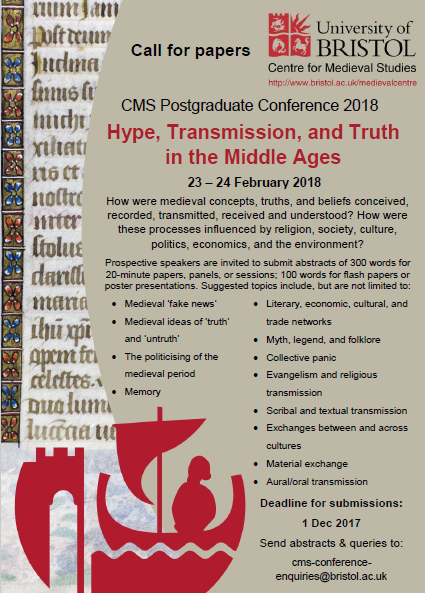Cardiff University’s Medieval and Early Modern Research Initiative is delighted to announce our next research seminar, which is to be given by one of our newest members and colleagues, Derek Dunne.
Derek’s paper – ‘Shakespeare’s Licence: Counterfeiting Authority in Early Modern England’ – will take place on Thursday, November 16 at 5.15 in room 2.47 of the John Percival Building. As ever, a wine and soft drink reception will follow the paper.
ABSTRACT: Shakespeare’s Licence: Counterfeiting Authority in Early Modern Literature
This talk will argue for the impact that licencing has had on the composition of early modern literature. Early modern playing companies required separate licences for performing a play, going on tour, printing a playtext, and for the theatre itself. Without the Master of the Revels’ signature, no performance of early modern drama could take place. Yet early modern licences are also open to forgery and counterfeiting, as detailed in the so-called cony-catching pamphlets; for example the ‘freshwater mariner’ is famed for ‘run[ning] about the country with a counterfeit licence, feigning either shipwreck or spoil by pirates’ (Greene, The Groundwork of Cony-Catching). Therefore the document designed to control an itinerant population actually becomes the means of criminality, due to the duplicitous potential of hand-written documents.
Early modern authors frequently exploit the metaphorical richness of the ‘licence’, such as when Sir Toby Belch calls on Sir Andrew Aguecheek to ‘taunt him with the licence of ink’ (Twelfth Night, 3.2.42). Similarly, forged documents of authority are a staple in the plots of early modern drama, from Hamlet to Bartholomew Fair. I want to explore how authors worked through the layers of ambivalence created by a document with which they would have been intimately familiar. By focusing on the the material documents that lay behind characters’ fictional interactions, I intend to draw attention to the period’s dual understanding of the ‘counterfeit’.
Cardiff Medieval and Early Modern Reading Group


